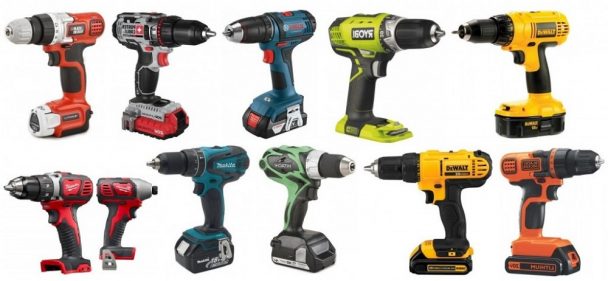Owning a cordless drill is never a bad idea, regardless of whether you’re an occasional DIY enthusiast, the family’s reliable handyman (or woman!), or a contractor looking to upgrade their toolkit. With so many different types of drills to choose from, it’s easy to get confused, and more so when you’re not familiar with the basics of drilling tools.
To give you a primer, here is some essential information on the three most common types of cordless drills.
Cordless Drill drivers
Battery-powered drill drivers with T-shaped handle are ideal for a variety of small maintenance and repair jobs. The term drill driver means that the tool can do both effectively: drill holes into various types of surfaces as well as drive screws.
This feature is essentially useful for DIY homeowners, as the two different bits increase the scope of what your power drill can do for you. The drill bit can be used to drive holes into all kinds of materials, including masonry and metal. The screwdriver bit can be used to put together objects, from ready-to-assemble furniture pieces to wall-mounted decoration pieces and shelves.
The combination drill goes a step further than the drill driver, and it is an ideal buy if you’re looking for a drill that can be easily used on hard surfaces.
Rotary Hammer Cordless Drills
Rotary hammer drills are powerful enough to drill through hard materials such as concrete and brick walls. They are fitted with parts that spin to induce a pounding effect on the drill bit, making it super easy to pierce the drill through masonry.
Rotary hammers are more appropriate if you’re looking for an impact drill. Most high-end models come with different modes: the simple drill, hammer, and hammer drill. If you’re a contractor, the rotary hammer drill is a versatile must-have for your toolkit.
Because of its many features, the rotary hammer model is considered among the best cordless drills on the market. It will cost you more than the standard drill, but it is well worth the extra dollars spent if you’re looking for a powerful tool that can be easily adapted for different jobs.
Hammer Drills
These are similar to rotary drills, producing a powerful pounding force to give more power to the drill bit. The difference is in the mechanics that produce the hammering effect. Hammer drills are fitted with two small metal discs that move past each other, forcing the chuck into movement.
If buying a hammer drill, check if the tool allows you to use the drill without the hammer. You’ll need this when drilling into light materials such as wood.
In conclusion, buying a drill is not something you’ll do every now and then, so read up on the various features, attachments and prices of different types of drills. Make a list of the tasks you intend to do using the drill, and then buy a drill that best fits the bill. Avoid buying in haste to avoid being stuck with an unwieldy, substandard tool.
